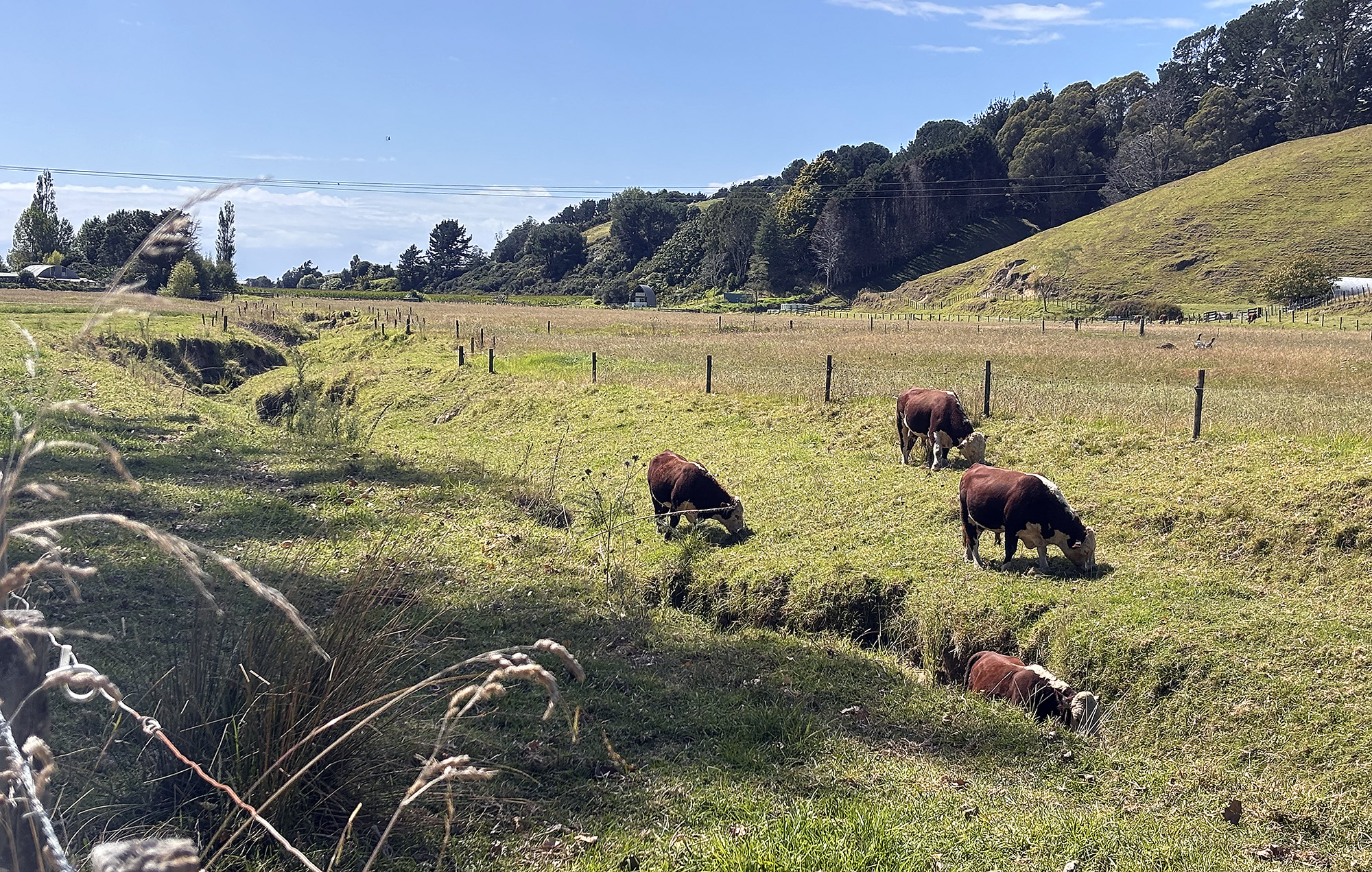No simple rules for grazing near water

Diane McCarthy
The importance of reporting pollution issues promptly was highlighted this week when the Beacon was presented with a photograph of bulls wading a short distance upstream from a popular swimming beach.
The photographer, who asked not to be named, produced this photo of what appear to be three Hereford bulls grazing around Maraetotara Stream, less than one kilometre upstream of Maraetotara Reserve, where the stream flows onto Ōhope Beach. Another bull appears to be wading in the stream.
This is a popular area for people to play on the beach and in the water.
They said they took the photo last week, but it was something they had noticed happening “reasonably frequently”.
“I frequently cycle along Maraetotara Road and noticed that cattle are very often grazed in Maraetotara Stream.
“I have taken photographs of this on three occasions over a couple of years, and sent three letters to the [Bay of Plenty] Regional Council, but have never once received any acknowledgement; let alone been informed of any action,” they said.
They had contacted the council through their online contact form, sending a photo of the cows grazing two-to-three years ago and later followed up with a second email asking whether the council had received the first one.
About one year ago, they contacted them again with the same complaint, using the same method of contact, with no response.
Regulatory staff from Bay of Plenty Regional Council were not able to say from just looking at the photo whether whoever owned the bulls was compliant with regulations.
Regional council regulatory compliance team leader Trudy Richards said when it came to cattle grazing on riverbanks, there were both regional stock exclusion rules in the regional council’s Regional Natural Resources Plan and national rules in the Ministry for the Environment’s stock exclusion regulations. The national regulations took precedence.
These varied depending on the type of water body, the type of stock and how they were being fed.
“We would need to assess which rules apply on a case-by-case basis.”
They would first need to determine if the Maraetotara Stream was more than a metre wide anywhere within the subject land parcel and if the animals are dairy support cattle or intensively grazing beef cattle as defined in the regulations.
Conditions could not be assessed with the photograph provided, as it did not record the date or time it was taken and did not show the bed of the stream or any water.
When compliance staff visited the site to see if the cattle were still grazing the area, they did not find any animals in the waterway.
Ms Richards said this was why it was important for people to call the Pollution Hotline at the time of the event.
She said the regional council had records of two historical complaints lodged about this issue for this area from different people. Both were followed up by both a land management officer and a compliance officer, which included visiting the site.
Ms Richards said the council’s general approach toward anyone breaking the regulations was to focus on education about the rules and advice about how to meet them.
“Our land management officers engage with farmers on fencing, planting and environmental programmes for the farm. Compliance officers provide guidance on the relevant rules to ensure compliance.
“For ongoing or frequent complaints, or in cases where there are significant environmental impacts, such as severe pugging, bank erosion, sedimentation, or effluent discharges, we transition to a compliance and enforcement approach.
“If this member of the public has concerns in the future, we would encourage them to call our 24/7 Pollution Hotline on 0800 884 883. Also, if they would like a compliance officer to call them back to talk through the rules, the team would be most happy.”
